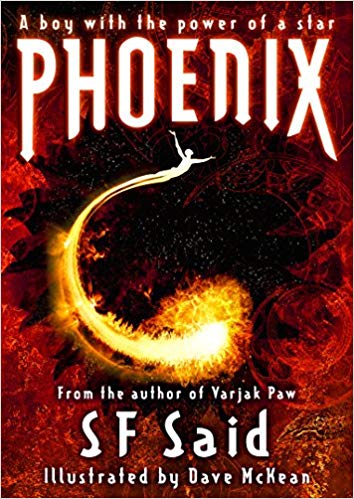
Phoenix is a novel by S .F. Said, with amazing illustrations by Dave McKean.
Lucky thinks he’s an ordinary Human boy… until he starts dreaming that the stars are singing to him, and he wakes up to find an uncontrollable power rising inside him. Lucky is forced to leave his home planet—Phoenix— on the run and in search of his father, who he hopes can give him answers.
The galaxy’s at war, there are deadly enemies among both Aliens and Humans, Lucky befriends an Alien starship crew and an Alien warrior girl who’s got neon needles in her hair… Oh, and he needs to find a way to save the galaxy. No big deal!

